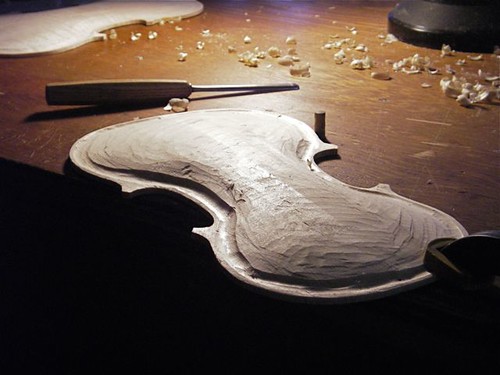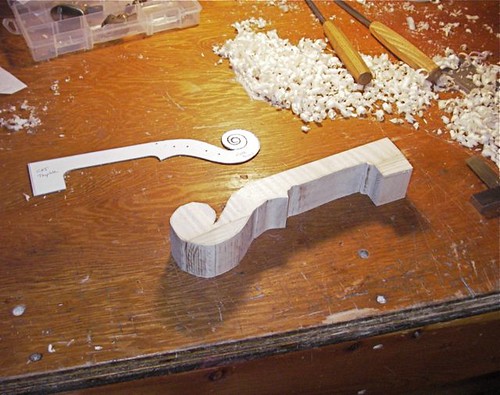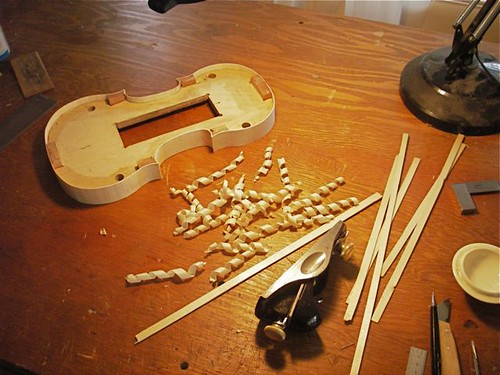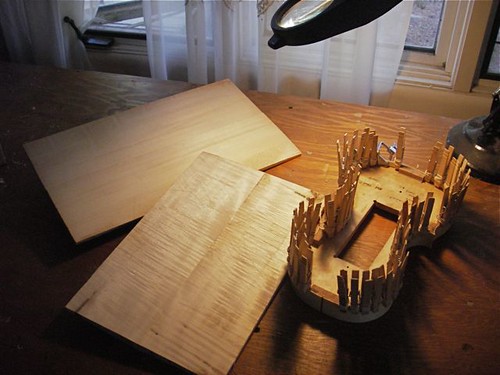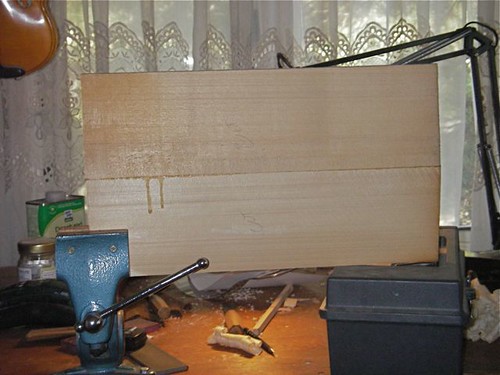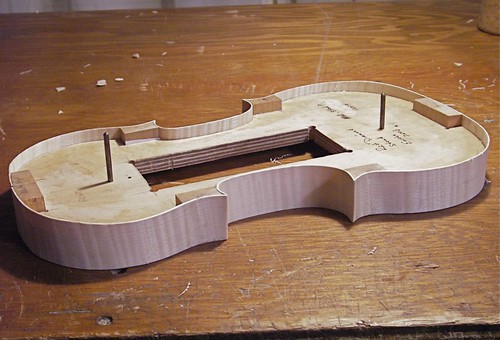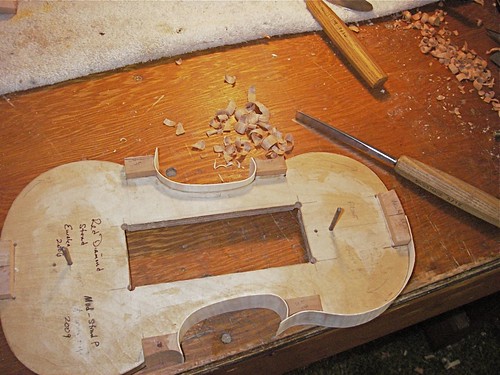
Following advice of Oded Kishony, I'm going to fit the neck to the body before gluing the back to the ribs. To glue the top to the ribs, though, I need to get the form out. I trimmed the linings last night, and this morning I took out the form. It appears to be a problem, but just split the corner blocks on the diagonal, knock the end and neck blocks loose, and you can spread the ribs taking the form out.
A word about the chisel with the plastic handle. It's cheap. I bought it over 30 years ago when I was doing carpenter work and carried it about in my leather work-apron. In my violin work, I find it pretty handy for scraping old hide glue and other destructive tasks. It takes a quick edge, though it doesn't last, and is the right size for splitting out blocks.
After the form is out, I trim the blocks to their final shape.

Here's the top glued to the ribs. Next step is to finish up the neck, then fit it.

With the glue hot, I decided to add the label to the back. Here it reads: Inspired by Antonio Stradivari 1714 "Jackson-Sloan" Nampa 2010. Inspired here really means in the more artistic sense, and certainly not a copy.

This past June, at the
Southern California Violin-Makers Workshop, I got to play the 1714 "
Jackson" Strad, as well as a 1742 Guarneri del Gesu, both owned by Doc Bill Sloan. A tremendous experience, I was particularly taken by the Strad. I was also surprised by its appearance, being much higher arched than I would have expected out of a Stradivari. We were able to really look over these instruments, and estimated the Strad top arch at 18 mm, and what appeared to me to be very steep arching. The e-string on this Strad was simply amazing. Anyway, I tried to follow a similar arching concept, without having anything like arching diagrams, just my memory. Hence, "inspired by."


















